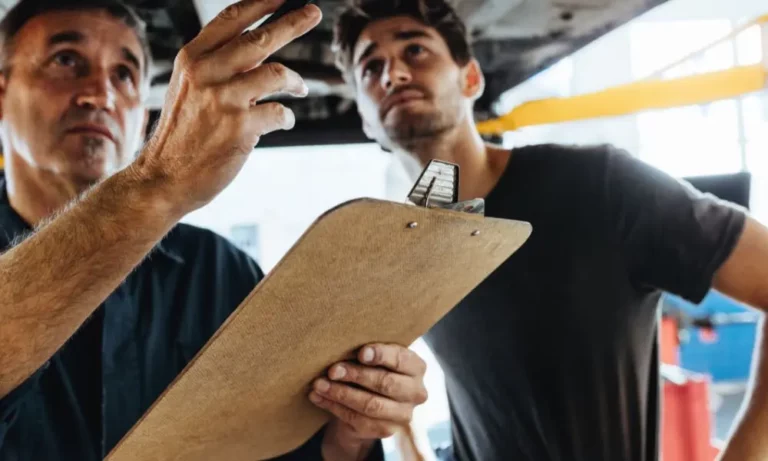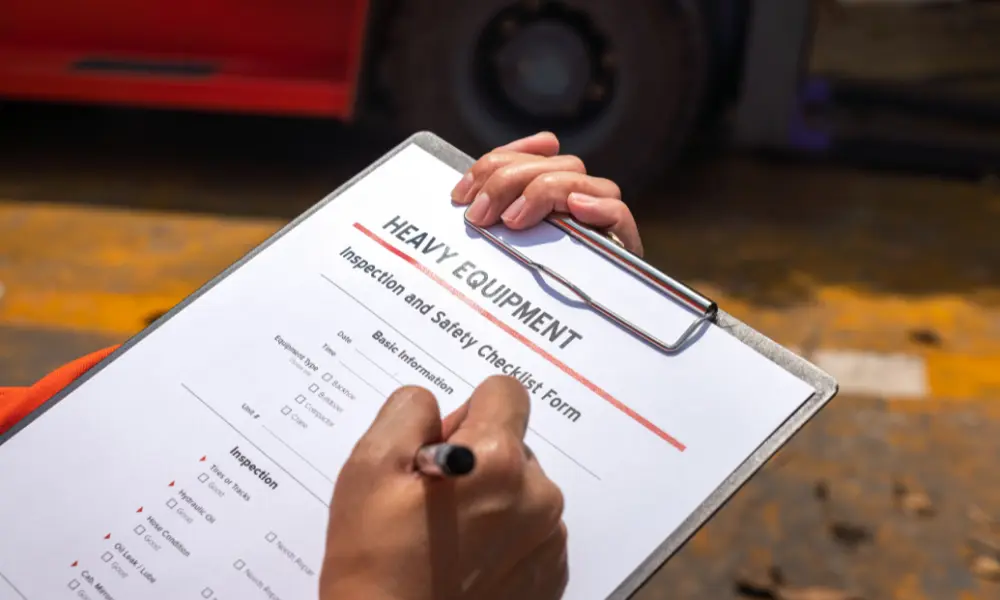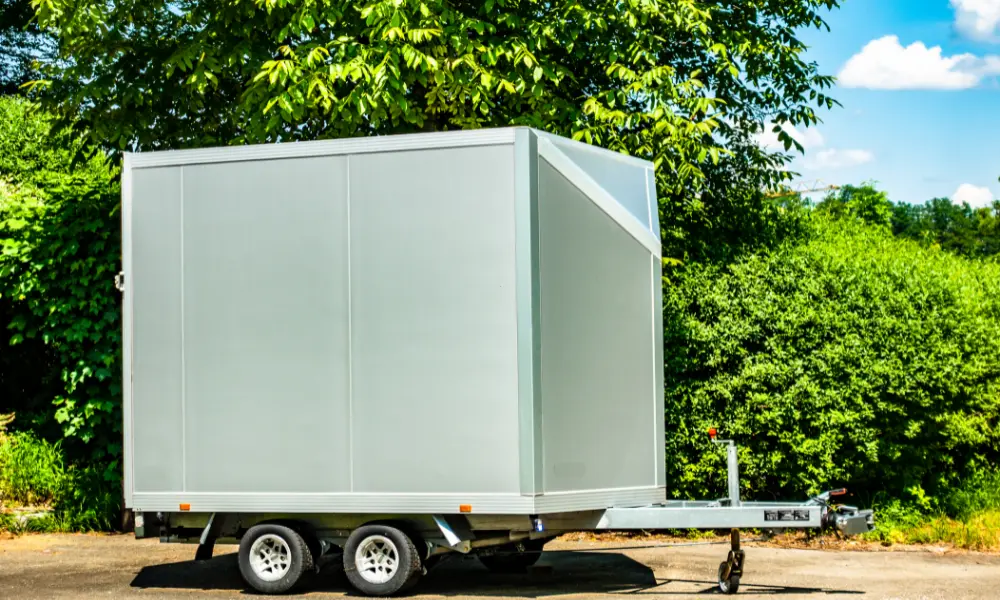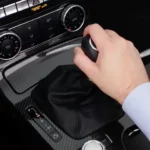Keeping your vehicle road-legal in New York isn’t just about having a valid license plate – it’s about ensuring your car is safe to drive. NYS vehicle inspection requirements might seem like just another bureaucratic hoop, but they’re designed to keep both you and other drivers safe. Let’s break down what you need to know about getting your vehicle inspected in the Empire State, from costs to what inspectors actually check.
What Are the Basic NYS Vehicle Inspection Requirements?
New York requires all registered vehicles to undergo inspection every 12 months. Your inspection sticker expires on the last day of the month punched on it, giving you a clear deadline to remember. The inspection clock also starts ticking whenever a vehicle changes ownership – so if you’ve just bought a car, you’ll need to get it inspected before you can register it.
These inspections aren’t optional. New York operates one of the largest vehicle inspection programs in the country, monitoring over 11 million vehicles annually. The program is entirely funded by fees collected from inspection stations, costing taxpayers nothing while maintaining safety standards statewide.
Types of Vehicle Inspections in New York
New York’s inspection system has two main components:
Safety Inspections
Safety inspections examine essential vehicle systems that affect your ability to drive safely. Certified inspectors will check:
- Braking systems
- Steering components
- Lights and signals
- Tires and wheels
- Suspension systems
- Windshield condition
- Seat belts and other safety features
Every part of your vehicle that could pose a safety risk gets a thorough evaluation.
Emissions Testing
Besides safety, New York takes air quality seriously through emissions testing. There are two main types:
- OBDII Testing: For most vehicles made in 1996 or later (gasoline) and 1997 or later (diesel) weighing under 8,501 pounds. This computerized test checks your vehicle’s onboard diagnostic system.
- Low-Enhanced Testing: For older vehicles not equipped with OBDII systems. This involves a visual inspection of emissions components.
The New York Vehicle Inspection Program (NYVIP3) uses computerized systems at licensed inspection stations to handle these tests efficiently and accurately.
How Much Does a NYS Vehicle Inspection Cost?
Inspection costs vary based on vehicle type and your location within New York:
| Vehicle Type | Safety Inspection Fee | Emissions Fee (NYMA)* | Emissions Fee (Outside NYMA) |
|---|---|---|---|
| Light vehicles (under 10,001 lbs) | $10-15 | $27 (OBDII) | $11 (OBDII) |
| Heavy vehicles (over 18,000 lbs) | $12-20 | — | — |
| Motorcycles | $6 | Exempt | Exempt |
| Diesel vehicles (NYMA only) | — | $25 | — |
*NYMA = New York Metropolitan Area (includes Nassau, Suffolk, Kings, Queens, Richmond, New York, Bronx, Westchester, and Rockland counties)
These fees have remained relatively stable for about two decades, though they don’t accurately reflect today’s labor costs. Inspection stations typically receive only $8 net profit from a $10 inspection after paying $2 for each sticker.
What Do Inspectors Check During a Safety Inspection?
When you take your vehicle for inspection, certified technicians perform a comprehensive evaluation of critical systems:
Brake System
Your car’s ability to stop safely is paramount. Inspectors check:
- Brake lines and hoses for leaks or cracks
- Brake pad and rotor condition
- Stopping performance and brake equalization
- Parking brake functionality
A car that can’t stop reliably is a danger to everyone on the road.
Lighting and Electrical Systems
Every light on your vehicle serves a safety purpose. The inspection examines:
- Headlights (high and low beams)
- Tail lights, brake lights, and turn signals
- Hazard warning lights
- Backup lights
- License plate illumination
Each light must work properly and provide adequate brightness.
Tires and Wheels
Your tires are your only contact with the road. Inspectors verify:
- Tread depth (minimum 2/32 inch in the most worn areas)
- Sidewall condition (checking for cuts, bulges, or damage)
- Wheel integrity and lug nut security
While tire pressure is checked, it generally doesn’t cause failure unless severely underinflated.
Steering and Suspension
These systems affect your ability to control your vehicle. The inspection includes:
- Steering wheel free play
- Linkage wear and power steering operation
- Shock absorber and spring condition
- Frame and chassis structural integrity
Any excessive wear or damage in these areas could compromise your safety.
Additional Safety Components
Inspectors also evaluate:
- Windshield condition (cracks can impair vision)
- Windshield wiper effectiveness
- Mirror mounting and condition
- Horn operation
- Seat belt functionality
- Fuel system (checking for leaks)
What Happens During an Emissions Test?
Emissions testing varies depending on your vehicle’s age and technology:
OBDII System Testing
For newer vehicles with onboard diagnostic systems, the process is straightforward:
- The inspector connects a scan tool to your vehicle’s diagnostic port
- The system checks if your “check engine” light is functioning properly
- The computer verifies that emissions monitoring systems are working correctly
- The test confirms no emissions-related fault codes are present
This computerized check takes just a few minutes and creates a digital record of your vehicle’s emissions performance.
Low-Enhanced Visual Inspection
For older vehicles without OBDII capability, inspectors perform a visual examination of emissions components including:
- Catalytic converter (checking it’s present and properly connected)
- Exhaust gas recirculation valves
- Positive crankcase ventilation systems
- Air injection systems
These visual checks ensure the basic emissions control systems are in place and connected.
Which Vehicles Are Exempt from NYS Inspections?
Not every vehicle needs annual inspection. New York provides several exemptions:
Age-Based Exemptions
- Vehicles less than two model years old (emissions testing only)
- Vehicles more than 25 model years old (emissions testing only)
- Historical vehicles with special registration plates (emissions testing only)
Vehicle Type Exemptions
The following are completely exempt from inspection requirements:
- Fire vehicles (except ambulances)
- Agricultural tractors
- Vehicles inspected by state/federal transportation departments
- Municipally owned transit vehicles over 8,500 pounds
- Electric vehicles (emissions testing only)
- Motorcycles (emissions testing only)
Regional Exemptions
Vehicles registered outside the New York Metropolitan Area are exempt from diesel emissions inspections, though owners can request voluntary testing.
Where Can I Get My Vehicle Inspected?
Licensed Inspection Stations
Inspections must be performed at DMV-licensed inspection stations displaying yellow and black “Official Inspection Station” signs. These privately owned but state-licensed facilities must meet specific requirements for space, equipment, and personnel.
New York maintains a cap on the number of public inspection stations to ensure proper oversight. Stations must have minimum enclosed areas of 300-600 square feet depending on population density, with special requirements for heavy vehicle inspection capabilities.
Certified Inspector Qualifications
Only certified motor vehicle inspectors who have completed state training can perform inspections. These professionals are categorized by expertise:
- Group 1: Light vehicles under 18,001 pounds
- Group 2: Heavy vehicles and buses
- Group 3: Motorcycles
Fleet and Dealer Options
Organizations with more than 25 vehicles may qualify for fleet inspection station licenses, allowing them to inspect their own vehicles and employee cars. Similarly, registered vehicle dealers can obtain licenses to inspect vehicles they hold for sale or demonstration.
New Anti-Fraud Inspection System
New York has recently implemented a modernized inspection sticker system to combat fraud:
Print-On-Demand Stickers
The new system prints vehicle-specific information directly onto each sticker, including:
- License plate number
- Vehicle Identification Number (VIN)
- Mileage reading
This personalized approach makes sticker theft or counterfeiting much less effective.
Enhanced Security Features
Each new inspection sticker contains a QR code linking to electronic inspection records, allowing police officers to instantly verify authenticity. The technology prevents common fraud schemes by making each sticker unique to a specific vehicle and inspection.
The transition began in 2023 with select pilot stations and is expanding statewide, with most inspection stations expected to be equipped with the new technology by the end of the year. Participating shops invest approximately $2,000 for new printing equipment and training.
What Are the Penalties for Driving Without a Valid Inspection?
Ignoring your inspection requirements can lead to significant consequences:
Fines
- $25-50 for stickers expired within 60 days
- $50-100 for stickers expired more than 60 days
- $50-100 for vehicles with no inspection sticker
- Plus a mandatory state surcharge of $88 ($93 in town and village courts)
Registration Restrictions
Vehicles failing to maintain current inspections cannot renew their registration. This creates a cascading legal problem for owners who delay inspection.
Repeat Offenses
Second offenses within 18 months carry fines of $50-200 and potential jail time up to 15 days. New York takes repeat violations seriously, reflecting the state’s commitment to vehicle safety standards.
Special Circumstances and Extensions
New Resident Rules
If you’ve just moved to New York, your valid out-of-state inspection remains acceptable until it expires or for one year from New York registration, whichever comes first. This provision eases the transition for new residents while ensuring eventual compliance with state standards.
10-Day Extensions
For reasonable causes, you can request a 10-day time extension from the DMV commissioner. These extensions are commonly granted for:
- New registrations
- Vehicle purchases from out-of-state sources
- When OBDII emissions monitors need additional driving time to reset
Inspection Failure Procedures
When vehicles fail inspection, owners typically receive 30 days to complete necessary repairs and return for re-inspection. During this period, vehicles may display rejection stickers allowing limited operation to and from repair facilities.
Emissions Inspection Waivers
If you’ve invested substantially in emissions-related repairs but still can’t pass inspection, you may qualify for a waiver:
Repair Cost Thresholds
For OBDII inspections, you must spend at least $450 (adjusted for inflation from 1989 levels) on emissions-related repairs. Safety components and warranty repairs don’t count toward this limit.
Documentation Requirements
To apply for a waiver, you’ll need comprehensive documentation including:
- All repair invoices
- Diagnostic procedures
- Inspection failure records
Stations must maintain these records for two years and submit detailed certification forms signed by both customers and certified inspectors.
Legislative Developments and Future Changes
The inspection system continues to evolve with several proposed changes:
Comprehensive Inspection Study
Recent legislative proposals would require the DMV commissioner to conduct studies of current inspection requirements, examining:
- Whether additional inspection items should be included
- If existing requirements should be modified
- Whether fee structures should be adjusted to reflect current market conditions
Antique Vehicle Exemptions
Multiple legislative attempts have sought to exempt antique vehicles 50 years or older from annual safety inspections. Proponents argue these well-maintained collector vehicles pose minimal road safety risks due to limited operation and enthusiast care.
Inspection Reminder System
Proposed legislation would require the DMV to notify vehicle owners 30 days before inspection expiration and provide a 5-day grace period after expiration. This system would help prevent inadvertent violations while maintaining safety compliance.
How to Prepare for Your NYS Vehicle Inspection
Taking a few simple steps before your inspection can save you time and the hassle of a failed test:
- Check your lights: Make sure all exterior lights work properly, including turn signals, brake lights, and headlights.
- Inspect your tires: Look for adequate tread depth and any visible damage to sidewalls.
- Test your wipers: Ensure they clear your windshield effectively and aren’t leaving streaks.
- Check your horn: A quick test confirms it’s working properly.
- Resolve any “check engine” light issues: This will automatically fail your emissions test if illuminated.
- Schedule early: Don’t wait until the last day of the month when inspection stations are busiest.
- Bring documentation: Have your registration, insurance card, and previous inspection information ready.
Why Vehicle Inspections Matter
While annual inspections might seem like an inconvenience, they serve important purposes:
The National Highway Traffic Safety Administration estimates that properly maintained vehicles have fewer critical component failures that can lead to accidents. By ensuring vehicles meet minimum safety standards, inspections potentially prevent injuries and save lives.
Beyond safety, emissions testing helps reduce air pollution. The EPA reports that proper vehicle maintenance significantly reduces harmful tailpipe emissions, improving air quality for all New Yorkers.
New York’s inspection program represents a comprehensive approach to road safety and environmental protection, balancing public welfare with practical implementation. The annual requirement ensures that the state’s 11 million registered vehicles meet minimum standards that protect everyone on the road.















